- Useful properties of inflorescences
- Indications for use
- Secrets of correct use
- Contraindications
Horseradish is a perennial plant of the Cabbage family, known for its curative properties. Shredded roots improve digestion, eliminate the symptoms of respiratory diseases. Laminated honey leaves attached to the diseased joints, stop inflammation and relieve painful pain. Widely used and horseradish folk medicine for the purification of the body of toxins and toxins, as well as the prevention of malignant tumors. During the planting of buds, the plant accumulates a large number of biologically active substances capable of provoking an allergy. Therefore, before using infusion or tincture from horseradish colors, one should consult a doctor about the safety of this method of treatment.
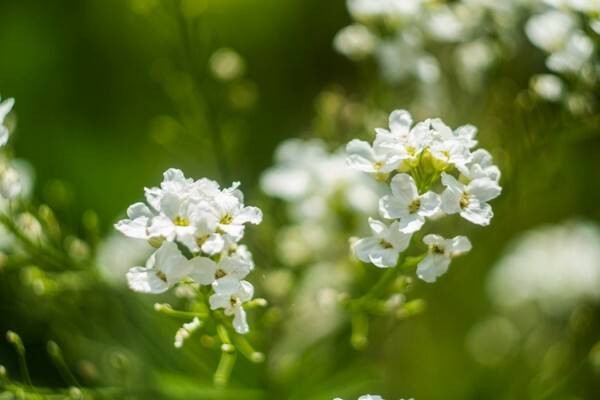
Useful properties of inflorescences
Horseradish usually throws out arrows in the early to mid-summer. For many owners of household plots, it is a real discovery that this plant is generally capable of blossoming. Indeed, horseradish lays buds quite rarely, usually in the second year after planting. For flowering, he needs comfortable conditions - stable heat, constant watering, and sometimes complex feeding.
Some gardeners, not aware of the medicinal properties of horseradish flowers, simply break off the arrows, which take useful substances from the roots and leaves. But fans of folk medicine know that it is in this part of the plant that biologically active compounds that determine its unique curative effect are concentrated.
Tip: After cutting off the arrows, do not tear off the flowers. It is necessary to place the inflorescence in a dry, warm, well-ventilated place. Typically, the drying process takes up to two weeks with constant mixing of medicinal raw materials to prevent putrefactive processes. Then the flowers must be cut off from the arrow and placed in a linen bag.
Buds of horse radish are blossoming flowers with snow-white petals, in the fragrance of which the notes of gillyflow are clearly felt. Each of them contains the whole combination of useful substances:
- vitamins of group B, ascorbic, folic and nicotinic acids, helping to accelerate and normalize metabolic processes;
- flavonoids, which increase the elasticity of the walls of large and small blood vessels;
- polysaccharides, cleansing the gastrointestinal tract from toxic compounds and undigested food residues;
- phytoncides, destroying membranes of pathogenic bacteria and pathogenic yeast fungi;
- mustard essential oil, which has spasmolytic and analgesic action, accelerating the healing of damaged tissues;
- organic acids, showing the properties of antioxidants, preventing the destruction of free cells of human body cells;
- fatty acids, taking part in the processes of hematopoies, accelerating the regeneration of damaged tissues.
The chemical composition of horseradish flowers includes micro- and macroelements: potassium, zinc, copper, molybdenum, iron, magnesium and manganese. These compounds are necessary for the body for optimal functioning of all vital systems. Replenishment of stocks in cells and tissues of nutrients increases the resistance of a person to viral and bacterial pathogens of respiratory, and in some cases, intestinal infections.
Indications for use
In folk medicine, water infusion and alcohol tincture from horseradish flowers is often used to treat respiratory infections caused by viruses, yeast fungi, pathogenic bacteria. This method of therapy is particularly relevant for influenza, bronchitis, tonsillitis, sinusitis, and herpetic angina. You can take infusions inside, and also 5-6 times during the day to rinse their throats. Flavonoids and essential oil of flowers have the ability to stop the inflammatory process, reduce the severity of painful sensations.
All medicinal forms of horseradish are used and in the treatment of dry cough, which prevents a person from sleeping peacefully at night. Infusions and tinctures dilute sputum, tenaciously attached to the respiratory tract. The viscosity of the thick mucus gradually decreases, and it is evacuated from the bronchi and larynx with each cough.
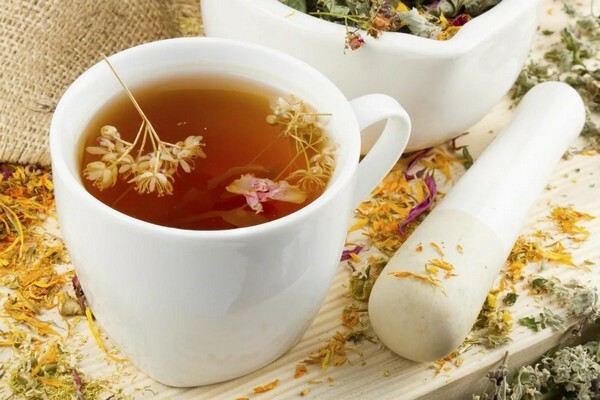
Cleansing the gastrointestinal tract
The use of horseradish flowers is the presence of a large number of pectins in this plant raw material. Polysaccharides bind harmful compounds deposited on the inner walls of the stomach, thick and small intestines, and then they are removed together with the calves. In viral or bacterial intestinal infections( dysentery, salmonellosis), pectins adsorb pathogens and toxic products of their vital activity.
Alcohol tincture from horseradish flowers helps to improve a person's health when poisoning poisons of plant and animal origin, heavy metals, pharmacological preparations. The medicine normalizes the processes of digestion and peristalsis, reduces the severity of symptoms of general intoxication. The use of tincture helps to avoid the development of a dangerous state of dehydration.
Antitumour effect of
Alcohol tincture from horseradish flowers is used by specialists of traditional medicine to prevent the formation of benign and malignant tumors. It prevents the mutation of healthy cells in cancerous cells. If the nearest relatives were diagnosed with malignant tumors, folk healers recommend that they take an alcohol tincture every month for a month. It is also used to prevent the spread of metastases to healthy tissues and organs.
Secrets of the correct use of
Useful properties of horseradish colors in recipes of traditional medicine are applied quite widely. Biological active compounds are contained in all parts of the plant. Useful substances from large leaves and roots can be easily extracted - they stand out together with the juice. But with small flowers the matter is more complicated. Traditional healers prepare from this plant raw material only two dosage forms: alcohol tincture and water infusion( tea).They are used in folk medicine for both internal and external use in the treatment of various pathologies in adults.
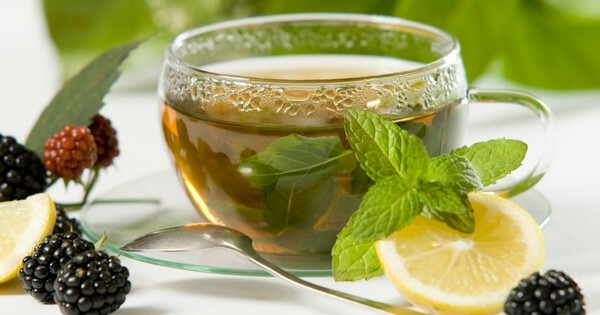
Alcohol tincture
To prepare this dosage form you will need vodka without flavorings and other food additives or 40% ethyl alcohol, which is sold in the pharmacy. Dried flowers need to fill a container of dark glass with a volume of 1-2 liters. Vegetable raw materials are not desirable to grind or compact. Then, gently, by stenochke, pour vodka or alcohol to the neck of the jar, and close the lid. During cooking it is necessary to store the tincture in a dark place protected from sunlight, periodically shaking the container. You can start treatment after 2-3 weeks.
The tincture does not need to be filtered - the longer the horseradish flowers are in it, the more it is saturated with biologically active substances. To prepare a healing drink, a teaspoon of alcohol solution should be stirred in a glass of boiled cool water. Traditional healers recommend to dilute the infusion with herbal decoctions, which have strengthening and toning properties. Such plants include:
- St. John's wort;
- chamomile;
- calendula;
- birch buds;
- charcoal.
To prepare the decoction, you need to pour a spoonful of dry vegetable raw material with a glass of hot water, bring to a boil and simmer for a couple of minutes, and after cooling, drain. Now it is necessary to add a teaspoon of alcohol tincture from horseradish flowers and proceed to treatment. For maximum therapeutic effect, folk healers are advised to drink a glass of the mixture 2 times a day after meals.
The duration of the therapeutic course is from one to three months.
Caution: Since ethyl alcohol is present in the obtained tincture, although in a small concentration, it is better to refuse driving the car for the duration of treatment.
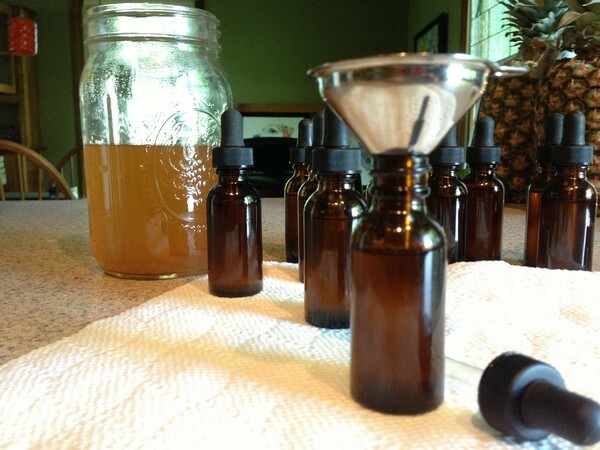
Water infusion
In folk medicine, the use of horseradish colors in the form of water infusion is practiced. This dosage form is not stored for long, so it is better to prepare it immediately before use. You can brew useful tea by the following recipe:
- Pour a teaspoon of dried horseradish flowers into a ceramic kettle and pour a glass of hot water( about 95 ° C).
- Cover, insist 25-30 minutes, drain.
Drink hot tea after meals twice a day. The obtained infusion has a rather specific taste, which is not liked by all people. To improve it, you can add to the drink thick honey, slightly mashed juicy berries, pieces of fruit, a slice of lemon. The duration of the therapeutic course varies depending on the disease. When diagnosing a malignant tumor of any localization, the infusion should be used for two months. If horseradish flowers are used to purify the gastrointestinal tract, the duration of treatment does not exceed 2 weeks.
It's interesting: The water infusion of horseradish flowers has a beneficial effect on the human skin. Daily rubbing helps to eliminate pigmentation spots, acne, small pimples and redness.
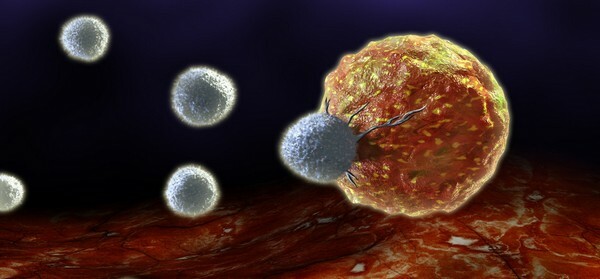
Contraindications
Infusions and tinctures from horseradish flowers are not used in the treatment of children, pregnant and lactating women with breastfed women. Mustard essential oil contained in all parts of the plant can provoke the development of an allergic reaction - atopic dermatitis, urticaria. Contraindications to this method of treatment also include:
- pathology of the urinary system: pyelonephritis, glomerulonephritis, urolithiasis, acute and chronic renal failure;
- liver disease: hepatitis, cirrhosis, fatty degeneration, including alcohol;
- endocrine disorders: thyrotoxicosis, diabetes mellitus.
Medicinal forms of horseradish flowers can not be used if there is individual sensitivity to the biologically active substances entering into its chemical composition.
Recommendation: Infusion of flowers is used in folk medicine for rinsing the oral cavity with periodontitis, gingivitis, stomatitis. Horseradish shows antimicrobial activity, destroys harmful bacteria on the gums, teeth, mucous membranes.
